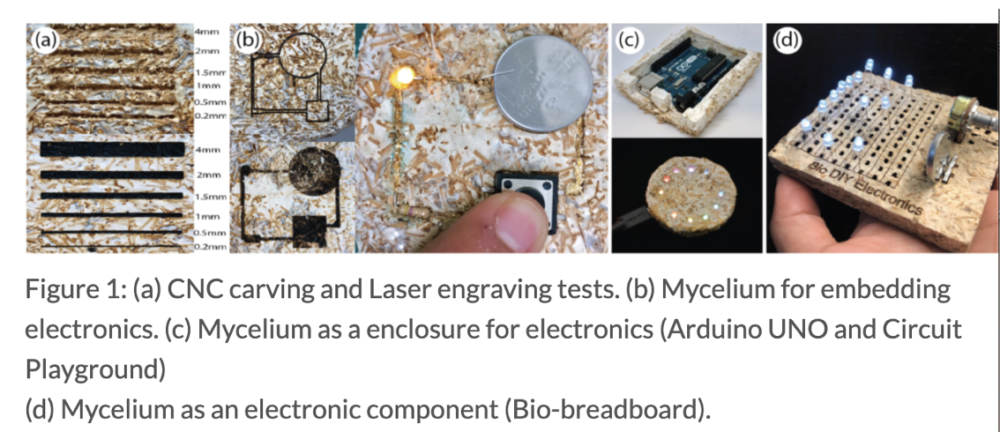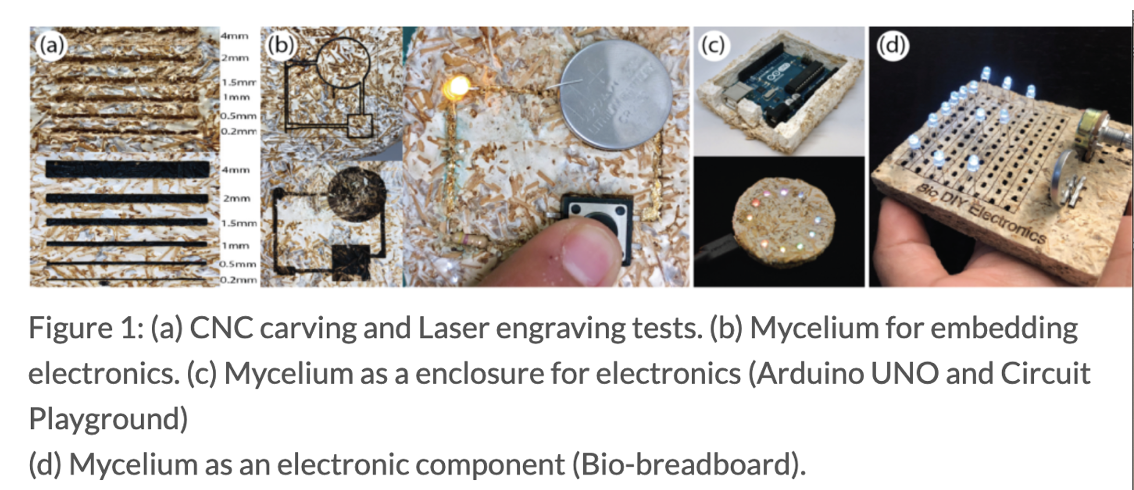Two designers I admire are Eldy S. Vasquez and Katie Vega. Together, they developed a breadboard made out of mycelium. This project is the first I have heard of using a biomaterial for electronics applications. As more attention is brought to the global electronic waste issue, the need for sustainable alternatives increases. A majority of electrical components contain metal, plastic, and chemicals, all of which will eventually end up in a landfill.

What is Mycelium? According to Fungi Ally, “Mycelium is the vegetative body for fungi that produce mushrooms and, in some cases, species of fungi that never grow a mushroom. When compared to a plant, mycelium is the root system and the mushroom is the flower.”
To create the breadboard, they started by activating the culture then placed it in a mold. The mold forced the growing mycelium to take a rectangular shape, resembling a breadboard. Once the mold was filled, it was removed and ready for use!
Not only does the electrical conductivity of mycelium lend itself well to electrical applications, it adequately replaced the plastic or metallic structure of traditional electronics by its ability to be CNC or laser cut. Although growing the mycelium breadboard takes time, it replaces the energy intensive fabrication process of electronics manufacturing with the naturally occurring growth process.
I admire these designers because they have developed a creative and unique solution that addresses a global issue.
Sources:
https://www.fungially.com/blogs/growing-mushrooms/what-is-mycelium-natures-world-wide-web
http://www.eldylazaro.com/portfolio/diy-electronics-with-mycelium/

